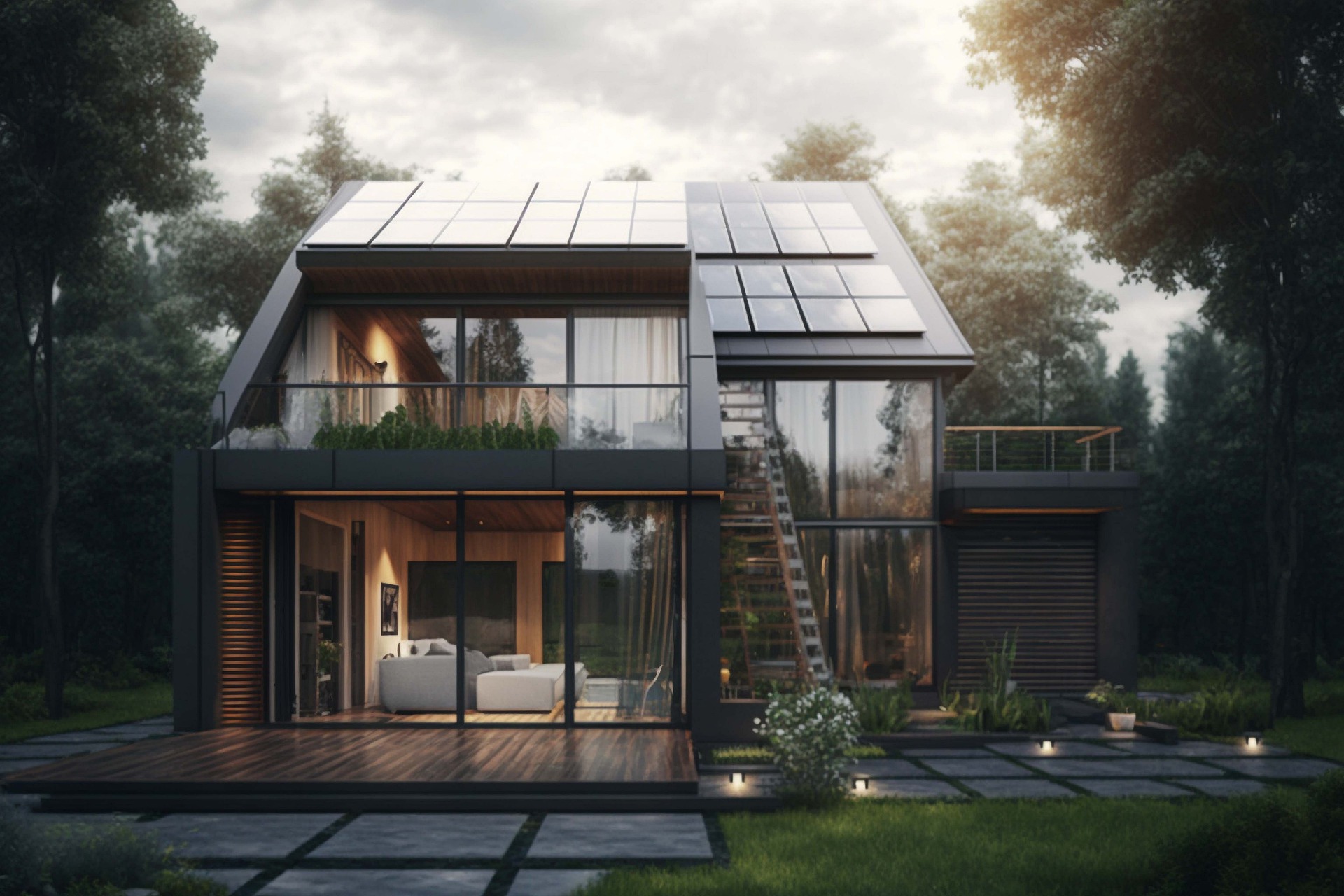Sign up to our newsletter!
No matter if you are moving, or improving, our newsletter is packed with the best tips, tricks and ideas to help you dwell well.
There’s plenty of new technology meant to help the environment, but can any of it be used at home? Modern technological advancements open up the possibility of using tech to reduce your house’s carbon footprint. You can outfit any room with it to improve energy efficiency and conserve essential resources.
U.K. homes must decrease the amount of carbon they produce. The Climate Change Committee sent a report to Parliament in 2022 detailing that houses lacked proper net-zero policies regarding energy consumption. It is considered one of the most significant factors preventing neutral emissions.
Everyone must reduce their carbon outputs since nearly 40% of all emissions in the U.K. come from heating and lighting buildings. Meeting the 2050 carbon-neutral goal might seem challenging, but technology can make it happen.
The good news is most people already know how to improve their home’s carbon footprint. Energy Performance Certificates are required by law whenever you buy or rent a house. They rate energy consumption as either very efficient or inefficient. You can look up your home’s rating and determine how to improve.
Once you know your house’s carbon footprint, you can get technology that will reduce it. Sustainable tech helps conserve energy and save resources. Many types work in any room of your home.
Heating and cooling are some of a home's primary sources of power consumption. A smart thermostat gives you control from anywhere. Some even have specialized settings to schedule changes or turn off automatically at certain temperatures.
The heat or air conditioning should be off whenever you leave the house to conserve the most energy. You can use a smart thermostat to automatically turn it off when you leave for work and turn it back on when you get home. You’ll stay at a comfortable temperature whenever you’re inside and lower your carbon footprint.
A smart home system is a hub where you can manage various devices through your phone. Since you control the technology remotely, you can make schedules or sequence their behaviour. For example, you would set your thermostat to turn on as soon as your garage door opens.
Full connectivity and control make everything much more energy-efficient, which reduces your home’s carbon footprint. You can set everything to run as efficiently as possible and turn everything off when you’re not using it.
Have you ever considered using renewable power sources? Solar panels are one of the best ways to reduce your home’s carbon footprint. They harness the sun’s rays and turn them into energy. You can use them instead of or in addition to traditional methods. You can also pair them with other smart technologies to make a more significant difference.
More technology is being powered with solar panels. For example, you can charge your phone with solar energy instead of plugging it into an outlet. Panels can also save you up to 70% on your energy bill, which is incredibly useful.
It seems simple, but even something as ordinary as a power strip can be effective. They can power multiple devices simultaneously and protect them from power surges. They also prevent things from using electricity when they’re off, which conserves energy. Constantly unplugging items can be a bother, so it’s good to have an alternative.
Lights draw a lot of power. You may forget to turn them off whenever you leave a room, but keeping them on isn’t energy-efficient. You can keep trying to remind yourself, or you can get smart lights.
They conserve energy in multiple ways. Most bulbs are designed to use very little power and lower your carbon footprint. On top of that, you can control them remotely. For example, you can schedule them to turn off at certain times or whenever you leave the house.
Showers and baths are more eco-friendly when less energy goes into heating the water. You can use an app on your phone to set your smart showerhead to your preferred temperature. It will quickly get the water to the correct temperature so you can get in and out faster.
Plus, they track your water and energy usage. You can monitor that data and change your behaviour for the benefit of the climate. Some versions even come with built-in lights to rinse off using less electricity. They also usually have customizable settings.
Appliances ranging from refrigerators to dryers have labels that show their energy efficiency and power consumption. They even come with a QR code to scan for more information about your product.
If you want to keep things straightforward, stick with energy-rated appliances. You won’t be able to turn them on remotely or schedule their use, but you also won’t need an app to run them. They simply give you an idea of how significant your home’s carbon emissions are.
U.K. homes must improve their energy efficiency and consumption to meet the 2050 goal of neutral emissions. Many spectacular technologies can reduce your home’s carbon footprint. Using them will positively impact the climate and the environment.

Live well with Moving and Improving